Technical Committee Members
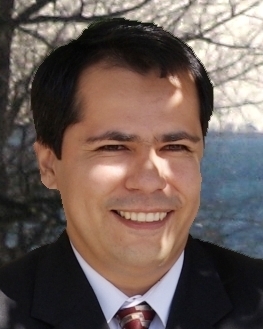 Carlos
E. Saavedra Carlos Saavedra
received the Ph.D. degree in electrical engineering from
Cornell University, Ithaca, New York, in 1998. From
1998 to 2000, he was with Millitech Corporation where he
designed front-end transceiver modules for 28 GHz and 38 GHz
broadband communications systems. In 2000 he joined the
Department of Electrical and Computer Engineering (ECE) at Queen's
University, where he is now an Associate Professor and leads the Gigahertz
Integrated Circuits Group.
He was the Graduate Chair of ECE at Queen's University from 2007 to
2010. He is
a recipient of an
NSERC Discovery Accelerator Supplement Award
for the period 2011-2014. Dr. Saavedra
is a Senior Member of the IEEE and he is a registered professional
engineer (P. Eng.)
in the province of Ontario, Canada. He served on the Steering Committee
of the 2012 IEEE International
Microwave Symposium (IMS), the Technical Program Committee (TPC) of the
2012 IMS and the TPC
of the IEEE RFIC
Symposium from 2008-2011. He is a member of the TPRC of the
Asia-Pacific Microwave Conference and he is a reviewer for the IEEE
T-MTT, IEEE JSSC, IEEE T-CAS Parts I and II, and IEEE MWCL. Professor Saavedra's
teaching activities
are in the area of microelectronic circuits and systems for
communications. He was voted the 3rd-year professor of the year in
Electrical Engineering in April 2012. Carlos
E. Saavedra Carlos Saavedra
received the Ph.D. degree in electrical engineering from
Cornell University, Ithaca, New York, in 1998. From
1998 to 2000, he was with Millitech Corporation where he
designed front-end transceiver modules for 28 GHz and 38 GHz
broadband communications systems. In 2000 he joined the
Department of Electrical and Computer Engineering (ECE) at Queen's
University, where he is now an Associate Professor and leads the Gigahertz
Integrated Circuits Group.
He was the Graduate Chair of ECE at Queen's University from 2007 to
2010. He is
a recipient of an
NSERC Discovery Accelerator Supplement Award
for the period 2011-2014. Dr. Saavedra
is a Senior Member of the IEEE and he is a registered professional
engineer (P. Eng.)
in the province of Ontario, Canada. He served on the Steering Committee
of the 2012 IEEE International
Microwave Symposium (IMS), the Technical Program Committee (TPC) of the
2012 IMS and the TPC
of the IEEE RFIC
Symposium from 2008-2011. He is a member of the TPRC of the
Asia-Pacific Microwave Conference and he is a reviewer for the IEEE
T-MTT, IEEE JSSC, IEEE T-CAS Parts I and II, and IEEE MWCL. Professor Saavedra's
teaching activities
are in the area of microelectronic circuits and systems for
communications. He was voted the 3rd-year professor of the year in
Electrical Engineering in April 2012.
|
|
 Edmar
Camargo
received his
Master and Ph.D.
degrees from University of São Paulo, Brazil in
’76 and ’85
respectively. He was a Teacher Assistant and Research Engineer in the
same University for a number of years. He emigrated to the US in 93
holding positions at Hewlett-Packard on mmWave Transceiver design and
FCSI-Fujitsu Compound Semiconductor Inc., taking the lead on frequency
converter projects. From 2000 – 2004 he was Director of
Engineering at FCSI coordinating the mm-Wave and handset developments.
In the last four years worked at WJ Communications on Power Amplifiers
for Infrastructure applications and at RF Micro Devices on Power
Amplifiers for Handsets. Currently is actively working on consulting
services. Edmar
Camargo
received his
Master and Ph.D.
degrees from University of São Paulo, Brazil in
’76 and ’85
respectively. He was a Teacher Assistant and Research Engineer in the
same University for a number of years. He emigrated to the US in 93
holding positions at Hewlett-Packard on mmWave Transceiver design and
FCSI-Fujitsu Compound Semiconductor Inc., taking the lead on frequency
converter projects. From 2000 – 2004 he was Director of
Engineering at FCSI coordinating the mm-Wave and handset developments.
In the last four years worked at WJ Communications on Power Amplifiers
for Infrastructure applications and at RF Micro Devices on Power
Amplifiers for Handsets. Currently is actively working on consulting
services.
|
|
Jeremy
Everard obtained 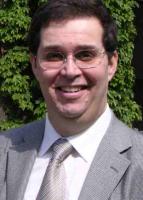 his PhD from the
University
of Cambridge in 1983. He worked in industry for six
years at the GEC
Marconi Research Laboratories, M/A-Com and Philips Research
Laboratories on Radio and
Microwave circuit design. At Philips he ran the Radio Transmitter
Project Group.He then taught RF and Microwave Circuit design,
Opto-electronics and
Electromagnetism at King's College London for nine years while leading
the Physical Electronics Research Group. He became University
of London Reader in Electronics at King’s College London in
1990 and Professor of Electronics at the University of York in
September 1993. In September 2007, he was awarded a five year research
chair in Low Phase Noise Signal Generation sponsored by BAE Systems and
the Royal Academy of Engineering. In the RF/Microwave area his research
interests include: The theory and
design of low noise oscillators using inductor capacitor (LC), Surface
Acoustic Wave (SAW), crystal, dielectric, transmission line, helical
and superconducting resonators; flicker noise measurement and reduction
in amplifiers and oscillators; high efficiency broadband amplifiers;
high Q printed filters with low radiation loss, broadband negative
group delay circuits and MMIC implementations. His current research
interests in Opto-electronics include: All optical
self-routing switches which route data-modulated laser beams according
to the destination address encoded within the data signal, ultra-fast
3-wave opto-electronic detectors, mixers and phase locked loops and
distributed fibre optic sensors. his PhD from the
University
of Cambridge in 1983. He worked in industry for six
years at the GEC
Marconi Research Laboratories, M/A-Com and Philips Research
Laboratories on Radio and
Microwave circuit design. At Philips he ran the Radio Transmitter
Project Group.He then taught RF and Microwave Circuit design,
Opto-electronics and
Electromagnetism at King's College London for nine years while leading
the Physical Electronics Research Group. He became University
of London Reader in Electronics at King’s College London in
1990 and Professor of Electronics at the University of York in
September 1993. In September 2007, he was awarded a five year research
chair in Low Phase Noise Signal Generation sponsored by BAE Systems and
the Royal Academy of Engineering. In the RF/Microwave area his research
interests include: The theory and
design of low noise oscillators using inductor capacitor (LC), Surface
Acoustic Wave (SAW), crystal, dielectric, transmission line, helical
and superconducting resonators; flicker noise measurement and reduction
in amplifiers and oscillators; high efficiency broadband amplifiers;
high Q printed filters with low radiation loss, broadband negative
group delay circuits and MMIC implementations. His current research
interests in Opto-electronics include: All optical
self-routing switches which route data-modulated laser beams according
to the destination address encoded within the data signal, ultra-fast
3-wave opto-electronic detectors, mixers and phase locked loops and
distributed fibre optic sensors.
|
|
 Bert
C. Henderson
is a Distinguished Fellow of Technology with Cobham DES (formerly
M/A-COM) in San Jose, California. He received his BSEE from
the
University of California Davis in 1978, and MSEE from University of
California Berkeley in 1979. From 1979 to 1994 he was with
Watkins Johnson Co. where he designed numerous mixers including the
M50, the first mixer with 2-26 GHz RF/LO and 2-18 GHz IF
coverage. He led development of the SMC1844, the first
uniplanar
mixer with over 18-40 GHz RF/LO and DC-18 GHz IF coverage.
This
enabled the first double-conversion continuously tuned DC-18 GHz
receiver architecture, which remains the industry standard for low
spurious and fast switching time. His numerous technical
articles
include “Reliably Predict Mixer IM Suppression”
that
derives the equation used by various commercial spurious
simulators. He has six patents for mixers and filters, and in
2007 received the Tyco Electronics Key Innovator Award. He
has
written various spurious and system analysis programs in C and
C++. He was an early MTT webmaster, co-chaired the AM noise
workshop for the 2005 MTT-S, and managed registration for the 2006
MTT-S. He has three daughters with his wife of 29 years, and
is
an avid runner. Bert
C. Henderson
is a Distinguished Fellow of Technology with Cobham DES (formerly
M/A-COM) in San Jose, California. He received his BSEE from
the
University of California Davis in 1978, and MSEE from University of
California Berkeley in 1979. From 1979 to 1994 he was with
Watkins Johnson Co. where he designed numerous mixers including the
M50, the first mixer with 2-26 GHz RF/LO and 2-18 GHz IF
coverage. He led development of the SMC1844, the first
uniplanar
mixer with over 18-40 GHz RF/LO and DC-18 GHz IF coverage.
This
enabled the first double-conversion continuously tuned DC-18 GHz
receiver architecture, which remains the industry standard for low
spurious and fast switching time. His numerous technical
articles
include “Reliably Predict Mixer IM Suppression”
that
derives the equation used by various commercial spurious
simulators. He has six patents for mixers and filters, and in
2007 received the Tyco Electronics Key Innovator Award. He
has
written various spurious and system analysis programs in C and
C++. He was an early MTT webmaster, co-chaired the AM noise
workshop for the 2005 MTT-S, and managed registration for the 2006
MTT-S. He has three daughters with his wife of 29 years, and
is
an avid runner.
|
|
 Amarpal
(Paul) Khanna
is a leading practitioner and researcher in the field of RF &
Microwave Technology. Dr.
Khanna is presently
Vice-President of Engineering
at Phase Matrix Inc., San Jose, CA. Prior to joining Phase Matrix, Dr.
Khanna has held leadership positions at Avantek, Hewlett Packard,
Agilent and Celeritek Inc. His professional interests include rf,
microwave and millimeter-wave components and sub-assemblies, broadband
wireless access and high speed technologies. He has
published/presented more than 50 articles in international journals and
conferences. He has 5 US patents and contributed chapters in three
microwave
circuits books.
In addition to his commitments in industry, Dr. Khanna is also an
adjunct professor at Santa Clara University where he teaches a graduate
Microwave and RF measurements course ELEN726. Dr. Khanna is also active
in IEEE. He was co-chair for IMS 2006 TPC and has been local MTT
chapter
chairman. Amarpal
(Paul) Khanna
is a leading practitioner and researcher in the field of RF &
Microwave Technology. Dr.
Khanna is presently
Vice-President of Engineering
at Phase Matrix Inc., San Jose, CA. Prior to joining Phase Matrix, Dr.
Khanna has held leadership positions at Avantek, Hewlett Packard,
Agilent and Celeritek Inc. His professional interests include rf,
microwave and millimeter-wave components and sub-assemblies, broadband
wireless access and high speed technologies. He has
published/presented more than 50 articles in international journals and
conferences. He has 5 US patents and contributed chapters in three
microwave
circuits books.
In addition to his commitments in industry, Dr. Khanna is also an
adjunct professor at Santa Clara University where he teaches a graduate
Microwave and RF measurements course ELEN726. Dr. Khanna is also active
in IEEE. He was co-chair for IMS 2006 TPC and has been local MTT
chapter
chairman. |
|
 Steve
Maas received
BSEE and MSEE degrees in Electrical Engineering from the University of
Pennsylvania in 1971 and 1972, respectively, and a Ph.D. in Electrical
Engineering from UCLA in 1984. Since then, he has been involved in
research, design, and development of low-noise and nonlinear microwave
circuits and systems at the National Radio Astronomy Observatory (where
he designed the receivers for the Very Large Array), Hughes Aircraft
Co., TRW, the Aerospace Corp., and the UCLA Department of Electrical
Engineering. Subsequently he worked as an engineering consultant and
founded Nonlinear Technologies, Inc., a consulting company, in 1993.
Recently he became Chief Scientist of Applied Wave Research, Inc. Dr.
Maas is the author of Microwave Mixers (Artech House, 1986 and 1992),
Nonlinear Microwave Circuits (Artech House, 1988; second edition 2003),
and The RF and Microwave Circuit Design Cookbook (Artech House, 1998).
From 1990 until 1992 he was the editor of the IEEE Transactions on
Microwave Theory and Techniques and from 1990-93 was an Adcom member
and Publications Chairman of the IEEE MTT Society. He received the
Microwave Prize in 1989 for his work on distortion in diode mixers and
the MTT Application Award in 2002. He is a Fellow of the IEEE. Steve
Maas received
BSEE and MSEE degrees in Electrical Engineering from the University of
Pennsylvania in 1971 and 1972, respectively, and a Ph.D. in Electrical
Engineering from UCLA in 1984. Since then, he has been involved in
research, design, and development of low-noise and nonlinear microwave
circuits and systems at the National Radio Astronomy Observatory (where
he designed the receivers for the Very Large Array), Hughes Aircraft
Co., TRW, the Aerospace Corp., and the UCLA Department of Electrical
Engineering. Subsequently he worked as an engineering consultant and
founded Nonlinear Technologies, Inc., a consulting company, in 1993.
Recently he became Chief Scientist of Applied Wave Research, Inc. Dr.
Maas is the author of Microwave Mixers (Artech House, 1986 and 1992),
Nonlinear Microwave Circuits (Artech House, 1988; second edition 2003),
and The RF and Microwave Circuit Design Cookbook (Artech House, 1998).
From 1990 until 1992 he was the editor of the IEEE Transactions on
Microwave Theory and Techniques and from 1990-93 was an Adcom member
and Publications Chairman of the IEEE MTT Society. He received the
Microwave Prize in 1989 for his work on distortion in diode mixers and
the MTT Application Award in 2002. He is a Fellow of the IEEE. |
|
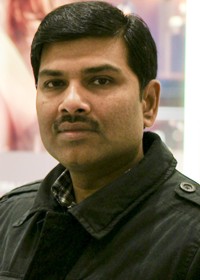 Ajay
K.
Poddar received his
Graduation (B. Tech-1990)
from NITC India, Fellowship (EFC-1991) from IAT India , Master (M.
Tech-1996) from IIT-D India,
Diploma (FUCHS-1997) from Johannesburg RSA, Doctorate (Dr.-Ing. -2004)
degree
from TUB Germany. From 1990-2001, he worked as a Senior Scientist in
DRDO
(Defense Research and Development Organization)
India, associated with the development of Proximity RF & MW
sensors
and RADAR for
various applications. He was Visiting Professor (1999-2004) for post
graduate
students in University of Pune, India, appointed as a Guest Lecturer
(2009-to
date) in Technical University Munich, Germany. Dr. Poddar is currently
working
as a Chief Scientist at Synergy Microwave Corp., NJ, USA, responsible
for
design and development of state-of-the-art RF modules such as
oscillator,
synthesizers, antenna, mixer, amplifier, filters, and MEMS based RF
components.
He holds several dozen of patents and has published more than 170
technical
papers in international conferences and professional journals,
contributed as a
coauthor of 5 technical books, reviewer of several journals, including
the IEEE
T-MTT, IEE TCAS, IEEE, IEEE UFFC, IET, and Electronics Letters. Dr.
Poddar is a
senior member of professional societies IEEE (USA), AMIE (India), and
IE
(India), advisory board member (Don Bosco Institute of Tech, Mumbai,
India) and
active member of various societies that are linked with scientific
contributions for good cause and broader perspective of the humanity.
Dr.
Poddar has received several awards (Young scientist awards for the year
1999
and 2000, MW & RF Products awards for the year 2004, 2006, 2008
and 2010)
for his contribution in the field of microwave signal sources for
current and
later generation communication systems. Ajay
K.
Poddar received his
Graduation (B. Tech-1990)
from NITC India, Fellowship (EFC-1991) from IAT India , Master (M.
Tech-1996) from IIT-D India,
Diploma (FUCHS-1997) from Johannesburg RSA, Doctorate (Dr.-Ing. -2004)
degree
from TUB Germany. From 1990-2001, he worked as a Senior Scientist in
DRDO
(Defense Research and Development Organization)
India, associated with the development of Proximity RF & MW
sensors
and RADAR for
various applications. He was Visiting Professor (1999-2004) for post
graduate
students in University of Pune, India, appointed as a Guest Lecturer
(2009-to
date) in Technical University Munich, Germany. Dr. Poddar is currently
working
as a Chief Scientist at Synergy Microwave Corp., NJ, USA, responsible
for
design and development of state-of-the-art RF modules such as
oscillator,
synthesizers, antenna, mixer, amplifier, filters, and MEMS based RF
components.
He holds several dozen of patents and has published more than 170
technical
papers in international conferences and professional journals,
contributed as a
coauthor of 5 technical books, reviewer of several journals, including
the IEEE
T-MTT, IEE TCAS, IEEE, IEEE UFFC, IET, and Electronics Letters. Dr.
Poddar is a
senior member of professional societies IEEE (USA), AMIE (India), and
IE
(India), advisory board member (Don Bosco Institute of Tech, Mumbai,
India) and
active member of various societies that are linked with scientific
contributions for good cause and broader perspective of the humanity.
Dr.
Poddar has received several awards (Young scientist awards for the year
1999
and 2000, MW & RF Products awards for the year 2004, 2006, 2008
and 2010)
for his contribution in the field of microwave signal sources for
current and
later generation communication systems.
|
|
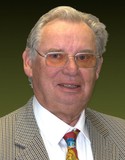 Ulrich
L.
Rohde - Professor Dr.-Ing.
Dr. h.c. mult Rohde was born in
Munich, studied electrical engineering in the 1960s and began
his
professional career as a development engineer. From 1968 to 1974, he
held the position of Technical Director for Military Communications
Systems at AEG Telefunken Ulm. He has been a partner at Rohde &
Schwarz since 1973. From 1974 to 1982, he served as Head of the Rohde
& Schwarz subsidiary in Fairfield / USA. Subsequently, he
worked as
Managing Director of the Radiocommunications Systems field of business
at RCA. In 1985, he took over the reins at Compact Software, which he
led until 1997. In addition, he serves as Chairman of Synergy
Microwave. From 2003-2007 he was a member of the advisory council
of IHP Microelectronics, Frankfurt (Oder). He is currently
Honorary Professor for High Frequency and
Microwave Engineering at the university in Cottbus (Germany), and he
carries the title of Full and Guest Professor at many universities
in the USA and Europe, including: the University of Florida,
Gainesville, George Washington University, Washington DC, University of
Oradea, Romania and the University of Bradford, England. Ulrich
L.
Rohde - Professor Dr.-Ing.
Dr. h.c. mult Rohde was born in
Munich, studied electrical engineering in the 1960s and began
his
professional career as a development engineer. From 1968 to 1974, he
held the position of Technical Director for Military Communications
Systems at AEG Telefunken Ulm. He has been a partner at Rohde &
Schwarz since 1973. From 1974 to 1982, he served as Head of the Rohde
& Schwarz subsidiary in Fairfield / USA. Subsequently, he
worked as
Managing Director of the Radiocommunications Systems field of business
at RCA. In 1985, he took over the reins at Compact Software, which he
led until 1997. In addition, he serves as Chairman of Synergy
Microwave. From 2003-2007 he was a member of the advisory council
of IHP Microelectronics, Frankfurt (Oder). He is currently
Honorary Professor for High Frequency and
Microwave Engineering at the university in Cottbus (Germany), and he
carries the title of Full and Guest Professor at many universities
in the USA and Europe, including: the University of Florida,
Gainesville, George Washington University, Washington DC, University of
Oradea, Romania and the University of Bradford, England. |
|
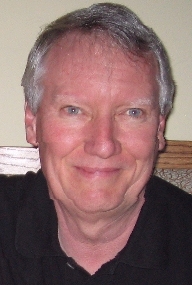 Scott
Wetenkamp
received his BSEE (’71), MSEE (‘73), and Ph.D.
(’75)
from the
University of Illinois. His Ph.D. thesis was on multiloop feedback
techniques which led him naturally to his long-term interest in signal
generation. His first job out of school was working on a 0.1 to 40 GHz
microwave synthesizer for Watkins Johnson. Later he was Engineering
Manager at Pacific Measurements (later became Wavetek), Vice President
of Engineering at Integra Microwave, Director or Research and
Development at Lucas Zeta, and Vice President of Engineering at
MicroLambda Wireless. Since
1986 he has been consulting on a wide variety of microwave systems and
sources ranging from low speed, low power UHF telemetry links to 86GHz
10GB data links. He has designed and built virtually every kind of
synthesizer – PLL, direct, multi-loop, delta, ultra-fast
switching,
low-noise, Costas loops, tracking loops, and data recovery loops.
Scott’s involvement with the MTT Society began as Treasurer
for
the
Santa Clara Valley MTT Chapter in 1991. He then worked his way up the
ranks becoming the local Chair in 1995. Following his involvement with
the 1996 MTT IMS (San Francisco) he became the Webmaster for the MTT in
1997, and the MTT AdCom secretary in 1998. This was followed by two
three-year terms as a member of the MTT AdCom. Scott
Wetenkamp
received his BSEE (’71), MSEE (‘73), and Ph.D.
(’75)
from the
University of Illinois. His Ph.D. thesis was on multiloop feedback
techniques which led him naturally to his long-term interest in signal
generation. His first job out of school was working on a 0.1 to 40 GHz
microwave synthesizer for Watkins Johnson. Later he was Engineering
Manager at Pacific Measurements (later became Wavetek), Vice President
of Engineering at Integra Microwave, Director or Research and
Development at Lucas Zeta, and Vice President of Engineering at
MicroLambda Wireless. Since
1986 he has been consulting on a wide variety of microwave systems and
sources ranging from low speed, low power UHF telemetry links to 86GHz
10GB data links. He has designed and built virtually every kind of
synthesizer – PLL, direct, multi-loop, delta, ultra-fast
switching,
low-noise, Costas loops, tracking loops, and data recovery loops.
Scott’s involvement with the MTT Society began as Treasurer
for
the
Santa Clara Valley MTT Chapter in 1991. He then worked his way up the
ranks becoming the local Chair in 1995. Following his involvement with
the 1996 MTT IMS (San Francisco) he became the Webmaster for the MTT in
1997, and the MTT AdCom secretary in 1998. This was followed by two
three-year terms as a member of the MTT AdCom.
|
|
 Kenji
Itoh was
born in Ishikawa, Japan, in 1960. He received the B.S degree in
electrical engineering from Doshisha University, Japan, in 1983, and
the Ph.D. degree in electrical engineering from Tohoku University,
Japan, in 1997. He joined Corporate R&D of Mitsubishi Electric
Corporation in 1983. From 1983 to 1997, he engaged in research and
development of microwave/millimeter-wave transmitters and receivers for
satellite communication systems, land mobile communication systems,
radar systems and EW systems. He covered research areas for mixers,
oscillators, frequency synthesizers including DDS and direct conversion
receivers. During years at Corporate R&D, he did early works
for
millimeter-wave even harmonic mixer MMIC, and presented them for IMS in
1991. In 1997 after receiving
the Ph.D. degree, he was transferred to the design department for
mobile terminals, and served as Section manager. From 1997 to 2002, he
engaged in research and development of RF receivers and transmitters
used in W-CDMA mobile terminals, and RF-ICs development in PDC. He
completed two early works for the RF engineering used in mobile
terminals. The first one was the world-first W-CDMA direct conversion
receiver. He produced the earliest result of full compliance of the
W-CDMA receiver in 2000, and applied the receiver for mass-produced
mobile terminals in early 2002. This was also the first mass produced
W-CDMA direct conversion receiver. The second one was high-integrated
SiGe transceiver-IC used in PDC terminal. He developed the first SiGe
PDC transceiver IC that has been used for mass-produced mobile
terminals since 2001. From 2002 to 2008, he engaged in development of
HW for 3G mobile terminals. Now he is charged in Corporate R&D
in
Mitsubishi electric. He
has authored and co-authored 25 transaction and journal papers and 47
international conference refereed papers including 3 invitations for
the IEEE International Microwave Symposium, the RF-IC symposium and the
Radio and Wireless Conference that are sponsored by IEEE MTT-S. He has
also been invited to 16 sessions as panelist and workshop speaker in
the IEEE International Microwave Symposium, the RF-IC symposium, the
GaAs-IC symposium, the Asia Pacific Microwave Conference and the
Microwave Workshops and Exhibition in Japan. He has 90 filed patents in
8 countries for RF, Microwave and Millimeter-wave areas. He has served
as a TPC member of the IEEE International Microwave Symposium since
2002, a TCC member (TCC-22) since 2003, an associate editor of the
Transaction on Microwave Theory and Techniques from 2004 to 2007, an
elected ADCOM member of IEEE MTT-S from 2006 to 2008, Chair of Asia
Pacific Coordination Committee since 2009 and Editorial Board of the
Proceedings of the EuMA. Also Dr.Itoh is Chair, Commission C, Japan
National Committee of URSI. Dr. Itoh is a member of Science Council of
Japan, a senior member of the Institute of Electrical Electronics
Engineering (IEEE) and a member of the Institute of Electronics,
Information and Communication Engineers (IEICE) of Japan. Kenji
Itoh was
born in Ishikawa, Japan, in 1960. He received the B.S degree in
electrical engineering from Doshisha University, Japan, in 1983, and
the Ph.D. degree in electrical engineering from Tohoku University,
Japan, in 1997. He joined Corporate R&D of Mitsubishi Electric
Corporation in 1983. From 1983 to 1997, he engaged in research and
development of microwave/millimeter-wave transmitters and receivers for
satellite communication systems, land mobile communication systems,
radar systems and EW systems. He covered research areas for mixers,
oscillators, frequency synthesizers including DDS and direct conversion
receivers. During years at Corporate R&D, he did early works
for
millimeter-wave even harmonic mixer MMIC, and presented them for IMS in
1991. In 1997 after receiving
the Ph.D. degree, he was transferred to the design department for
mobile terminals, and served as Section manager. From 1997 to 2002, he
engaged in research and development of RF receivers and transmitters
used in W-CDMA mobile terminals, and RF-ICs development in PDC. He
completed two early works for the RF engineering used in mobile
terminals. The first one was the world-first W-CDMA direct conversion
receiver. He produced the earliest result of full compliance of the
W-CDMA receiver in 2000, and applied the receiver for mass-produced
mobile terminals in early 2002. This was also the first mass produced
W-CDMA direct conversion receiver. The second one was high-integrated
SiGe transceiver-IC used in PDC terminal. He developed the first SiGe
PDC transceiver IC that has been used for mass-produced mobile
terminals since 2001. From 2002 to 2008, he engaged in development of
HW for 3G mobile terminals. Now he is charged in Corporate R&D
in
Mitsubishi electric. He
has authored and co-authored 25 transaction and journal papers and 47
international conference refereed papers including 3 invitations for
the IEEE International Microwave Symposium, the RF-IC symposium and the
Radio and Wireless Conference that are sponsored by IEEE MTT-S. He has
also been invited to 16 sessions as panelist and workshop speaker in
the IEEE International Microwave Symposium, the RF-IC symposium, the
GaAs-IC symposium, the Asia Pacific Microwave Conference and the
Microwave Workshops and Exhibition in Japan. He has 90 filed patents in
8 countries for RF, Microwave and Millimeter-wave areas. He has served
as a TPC member of the IEEE International Microwave Symposium since
2002, a TCC member (TCC-22) since 2003, an associate editor of the
Transaction on Microwave Theory and Techniques from 2004 to 2007, an
elected ADCOM member of IEEE MTT-S from 2006 to 2008, Chair of Asia
Pacific Coordination Committee since 2009 and Editorial Board of the
Proceedings of the EuMA. Also Dr.Itoh is Chair, Commission C, Japan
National Committee of URSI. Dr. Itoh is a member of Science Council of
Japan, a senior member of the Institute of Electrical Electronics
Engineering (IEEE) and a member of the Institute of Electronics,
Information and Communication Engineers (IEICE) of Japan.
|
|
Jean-Christophe
Nallatamby received
the DEA degree in microwave and optical communications in 1988, and the
Ph.D. degree in Electronics from the University of Limoges, France, in
1992. He is currently lecturer at the University of Limoges. His
research interests include semiconductor devices characterization and
modelling, with a special emphasis on low frequency noise measurement
and modelling oriented to MMIC CAD; microwaves,
millimetre
waves mixer and oscillator circuits design tools and methods; linear
stability and non linear stability analysis of nonlinear microwave
circuits; His main intensive research is presently focused on the
characterization of noise sources in semiconductor devices, their
CAD-oriented modelling and the design methods leading to the
optimization of the transistor oscillator phase noise. |
|